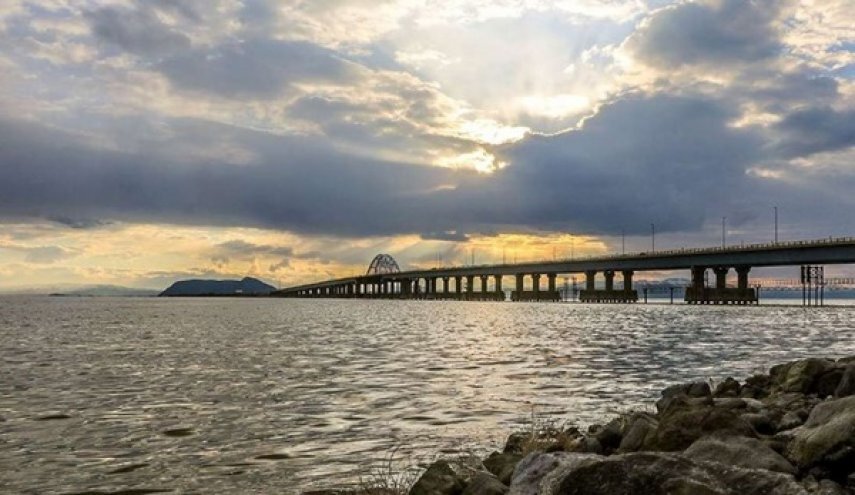Lake Urmia being revived ‘slowly, but surely’: UNDP

TEHRAN – A combination of man-made efforts and higher rainfall in recent years is “slowly, but surely reviving what was once the second largest saltwater lake in the world,” Claudio Providas, Resident Representative in Iran for the United Nations Development Program (UNDP), has stated.
There is still a long way to go for the lake though. The target is to reach a water level of just over 1,274m, something which “still requires substantial efforts,” Providas said.
“But things are at least heading in the right direction. Regarding the biodiversity of the lake, there are signs of hope,” he added, according to Forbes.
He went on to say that brine shrimp, which had disappeared from the lake’s ecosystem due to high salinity, are returning. The number of water birds such as flamingos has also increased from 4,000 during the worst period to 60,000 last year.
Rescuing the lake has been an international effort, the ministries and the Urmia Lake Restoration Program made efforts with the UNDP support. Local communities have also been heavily involved, in addition to almost $7 million in financial support from the Japanese government, so far more than $1 billion has been spent on the project in total.
Farhad Sarkhosh, head of the Lake Urmia Restoration Program’s office in West Azarbaijan province said that the lake’s level has reached 1,271.87 meters, which is 37 centimeters higher than the last year’s level.
The lake's water volume was estimated at more than 4.620 billion cubic meters, which indicates an increase of 1.010 billion cubic meters compared to the last year and 1.7 meters since 2014.
He went on to say that Lake Urmia’s surface area has now reached more than 3,093 square kilometers, adding that the figure has increased by 244 square kilometers compared to the same period last year.
According to the latest statistics of the Meteorological Organization, since the beginning of this water year, West Azarbaijan province received 339.9 millimeters of rain, which demonstrates an increase of 14.6 percent compared to the long-term average.
The above normal levels of rain came to help conservation measures to preserve the Lake Urmia, however, it still needs 9.5 billion cubic meters of water to reach its ecological level of 1274.10.
Shared between West Azarbaijan and East Azarbaijan provinces in northwestern Iran, Lake Urmia, was once the largest salt-water lake in West Asia. It was home to many migratory and indigenous animals including flamingos, pelicans, egrets, and ducks, and attracted hundreds of tourists every year who had bathed in the water to take advantage of the therapeutic properties of the lake.
However, decades of long-standing drought spells, excessive dam construction and elevated hot summer temperatures that speed up evaporation as well as increased water demands in the agriculture sector shrank the lake drastically. In 1999 the volume of water which was at 30 billion cubic meters drastically decreased to half a billion cubic meters in 2013. Moreover, the lake surface area of 5,000 square kilometers in 1997 shrunk to one-tenth of that to 500 square kilometers in 2013.
These days, life has returned to Lake Urmia. The lake now has so much water that tourists can swim in its shiny water and birds and aquatic species such as flamingos and Artemia have returned to it, but it still has a long way to completely survive.
FB/MG
